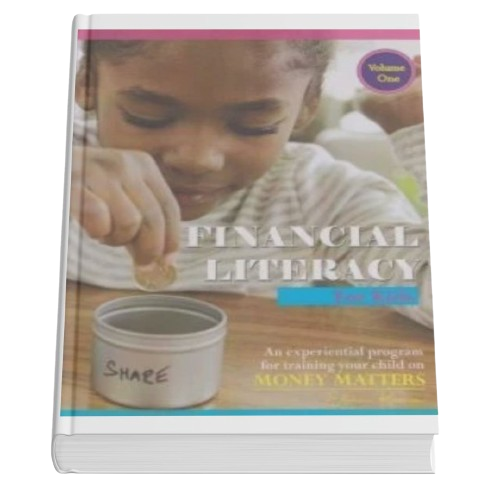How to Make Financial Lessons Engaging and Fun for Kids
Teaching children about money and enhancing their financial literacy can be an uphill task task for parents. It is made worse when parents approach these life lessons with a sense of inadequacy.
Allow me to put your mind at ease.
- your life experiences – good or bad are an integral part of teaching you children
- solutions are created at levels that are higher than where the problem is created or exists
- teaching children about money is not a task to delegate. Take charge as it is a subject matter that must rhyme with your family values
- teaching children about money doesn’t have to be boring. By incorporating fun games, engaging activities, and real-life scenarios, you can make financial lessons enjoyable for kids of all ages.
As parents, we all want our children to grow up with a strong foundation in financial literacy. After all, understanding money management, budgeting, and saving are crucial life skills that will serve them well in the future.
How do you make financial lessons engaging and fun for kids?
As parents, we want our children to
- develop healthy financial habits
- have a positive relationship with money.
But, let’s face it, traditional lectures and worksheets won’t give us the desired results
In this article, we’ll explore practical tips on incorporating games, activities, and real-life scenarios to make learning about money enjoyable for children of all ages. We’ll also introduce you to some exciting financial games and resources that can make for great family engagement and bonding experiences.
Tip 1: Start with Games
Games are an excellent way to create and sustain engagement, fun and excitement when teaching children about money and financial concepts. Here are some classic board games that can help teach kids about money:
- Monopoly: This classic board game is a great way to teach kids about budgeting, saving, and investing. You can modify the rules to suit your child’s age and understanding level.
- Cash Flow by Robert Kiyosaki: This game is designed to teach kids about financial literacy, entrepreneurship, and wealth-building. It’s suitable for kids aged 10 and above.
- The Allowance Game: A board game that teaches kids about earning, saving, and spending money.
- Money Bingo: A fun and interactive way to teach kids about coins, bills, and making change.
You can buy these games on Amazon, Jumia or other shops with educational materials in stock.
Tip 2: Use Real-Life Scenarios
Using real-life scenarios is an effective way to teach kids about money in a practical way. Here are some ideas:
- Shopping for the house: Take your kids shopping and give them a budget to stick to. This will teach them about making smart purchasing decisions and staying within a budget.
- Money box: Create a money box (or piggy bank) system where kids can divide their allowance into savings, spending, and giving categories.
- Entrepreneurship: Encourage your children to start their own small business, such as dog walking or crafting. This will teach them about earning money, saving, and investing.
Tip 3: Make teaching children about money Interactive
Make financial lessons interactive by incorporating activities that involve problem-solving and critical thinking. Here are some ideas:
- Money Hunt: Create a scavenger hunt with clues related to money, such as finding coins or bills with specific denominations.
- Financial game nights or weekends: Write down financial terms, such as “budget” or “interest,” on slips of paper and have kids act them out for their family members to guess.
- Money Story Time: Create a story together as a family, taking turns adding to the narrative and incorporating financial concepts along the way.
Tip 4: Teach and Lead by Example
As parents, we are our children’s most significant role models. It’s essential to model good financial behavior and be open with our kids about our financial decisions. Here are some ways to lead by example:
- Learn together: You can do this by reading books like “The Psychology of Money” by Morgan Housel or “The Investor” by Edwin Kiarie or Financial Literacy for Kids by Edwin Kiarie. It is also great to watch finance videos and programs together, such as Ramit Sethi’s “I Will Teach You To Be Rich“.
- Share Your Financial Goals: Share your financial goals with your kids and explain how you plan to achieve them.
- Involve Your Kids in Financial Decisions: Involve your kids in financial decisions, such as planning a family vacation or creating a budget for a special event.
- Practice What You Preach: Make sure you’re practicing what you preach when it comes to financial discipline and responsibility.
By doing so, you’ll show your kids that financial literacy is a lifelong journey and that it’s okay to ask questions and learn together.
As you explore new concepts and strategies, you can discuss them with your children, explaining complex ideas in a way that they can understand.
This not only helps them develop healthy financial habits but also strengthens your bond and creates a sense of shared responsibility for your family’s financial well-being.








